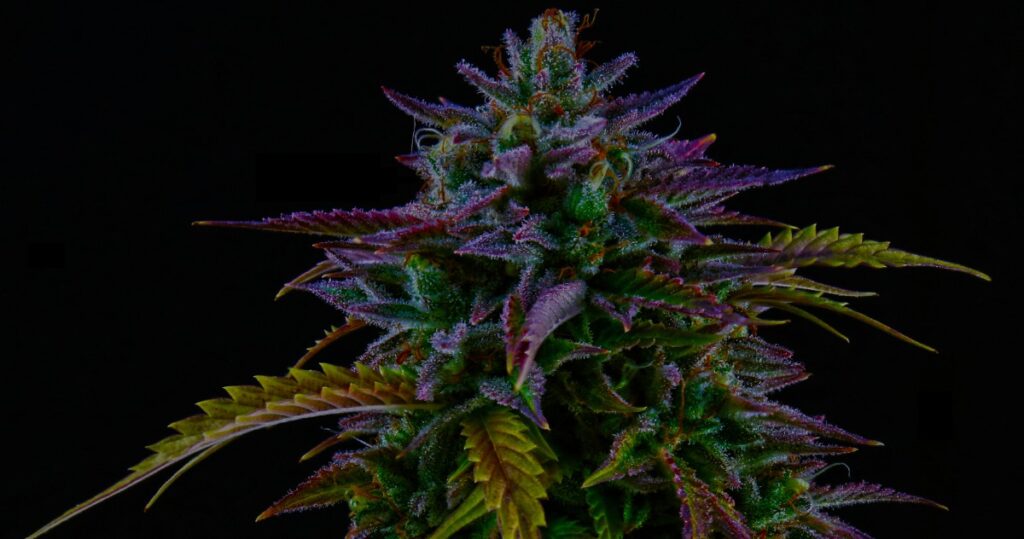
The cannabis plant is beautifully complex, offering us an abundance of options: different ways to consume, different cannabinoids, and a bouquet of terpenes in each product. So how do you know what works best for you?
The answer is simple: a little education and some trial and error. This blog walks you through the basic terms you’ll see describing cannabis products to help you understand what you’re consuming, how it affects you, and how you can create a supportive cannabis routine that fits your needs.
What is My Endocannabinoid System?
First things first: meet your endocannabinoid system. The endocannabinoid system (ECS) is a biological system with receptors on every organ in your body.
Your ECS is a master regulatory system, responsible for helping keep your body in balance, or homeostasis. This means that your ECS touches nearly every function in your body – from sleep and memory to mood regulation, appetite, and hormone regulation.
And yes, this system has everything to do with the effects of cannabis.
How Does the ECS Work?
Your endocannabinoid system interacts with two kinds of cannabinoids:
- endocannabinoids, compounds produced in your body
- phytocannabinoids, compounds produced in the cannabis plant
Compounds interact with ECS receptors in complex ways that we are only starting to understand. The most researched receptors are CB1 and CB2. THC is the most straightforward interaction and has a “lock and key” mechanism for your CB1 receptor.
You don’t need a deep dive into the ECS to start to tailor your cannabis routine to your specific needs – just pay attention to the way certain strains and consumption methods make you feel.
Why Haven’t I Heard of the Endocannabinoid System Before?
The system was only identified in the early 1990s and cannabis stigma has kept it from crossing into mainstream medical knowledge. But keeping this system functioning well is a major part of being healthy.
What we know about the ECS now leads researchers to believe that understanding the ECS is vital to health. A complicating factor? Everyone’s ECS is unique (like your fingerprint) which is why people react to the same cannabis strains differently.
What are Cannabinoids?
Cannabinoids (or phytocannabinoids, as mentioned above) are chemical compounds that are produced only in the cannabis plant and play a key role in your experience with different strains and products. Cannabinoids interact with your endocannabinoid system to product specific effects.
You’ve likely heard of THC and CBD, the two most famous cannabinoids from the plant. You may have also heard of CBG and CBN – or they may sound like alphabet soup. You don’t have to understand what the abbreviations stand for, but it is important to understand the most common effects of each cannabinoid.
First, something important: the cannabis plant does not actually produce THC and CBD as you recognize them. The plant itself produces cannabinoid acids: THCa, CBDa, CBGa, and so on. These acidic compounds are converted into the cannabinoids you know through heat: heat during the extraction process, heat from a dry herb vape, or heat from a lighter.
Why does this matter? Acidic cannabinoids have similar properties to their neutral compounds, but you won’t feel their effects in the same way. THC gets you high, but THCa does not. Acidic compounds are most commonly found in tinctures and topical products, not so much in vapes.
THC
The one, the only, the irreplaceable – THC is the best-known cannabinoid because it causes a “high”. But that’s far from this compound’s only effect – you have only to ask any given cannabis consumer why they choose THC and you’ll get a laundry list of benefits – some scientifically backed and some anecdotal.
THC can help relieve pain, boost your mood, combat nausea, help you sleep, reduce inflammation – and more. Little wonder that this cannabinoid is often seen as magic by people who find relief with it.
CBD
Unlike THC, CBD doesn’t get you high. But it does have many overlapping benefits of THC, making it an increasingly popular choice for people who want cannabis medicine, without getting high.
CBD can help relieve pain, reduce inflammation, fight anxiety, and reduce seizures. It can also mitigate some of the negative side effects of THC, like anxiety and paranoia, which makes it a popular pairing.
CBG
CBG is a minor cannabinoid that’s anything but minor. In fact, CBGa is the mother of all cannabinoids, because THCa and CBDa come from CBGa. This cannabinoid has become more popular in recent years, although it’s still not quite mainstream.
Early studies have shown that CBG is an effective pain reliever, has neuroprotective properties, and can reduce inflammation. CBG also plays a role in the entourage effect.
CBN
CBN has made waves recently for being a sleep-inducing cannabinoid. The science behind this sedative effect is not yet decided, but CBN seems to help with sleep most effectively when paired with THC. This makes sense when you consider that CBN is a natural degradation of THC.
Despite the uncertainty around CBN’s sedative effects when used alone, this cannabinoid is being explored for other medicinal properties like appetite stimulation and reducing inflammation.
Can the Body Produce Cannabinoids?
Yes, your body produces molecules called endocannabinoids for your entire life. These molecules are only starting to be researched and understood in recent years, and we have a long way to go before we truly understand endocannabinoids.
The two we know the most about are called anandamide (the bliss molecule, for its role in mood regulation, reward response, and emotions) and 2-AG (essential for immune function and reducing inflammation.)
What is the Entourage Effect?
The entourage effect is the theory that cannabis works best when used in whole plant form. The presence (or lack of) cannabinoids, terpenes, and other compounds change the effects. For example, using a product that contains THC, CBD, and terpenes works better than a product with THC isolate.
The entourage effect states that consuming cannabis in all its complexities, whether in the plant, live rosin, or added back together, works better than consuming isolated cannabinoids. This is still a grey area for researchers, but it speaks to the complexity of the plant, and your endocannabinoid system.
What are Terpenes?
Terpenes are aromatic compounds that play an important role in the aroma and taste of your cannabis strains. Unlike cannabinoids, terpenes are found in every plant in the natural world – and you’ll likely recognize a few common terps in cannabis from walks outside.
Myrcene
Myrcene has an herbal, musky aroma and is ubiquitous in its appearance in most strains on the market today. It can be challenging to find a strain that doesn’t have at least a small amount of myrcene (although there are some.)
This terp appears in other plants like mango and hops, as well as lemongrass, bay leaves, and wild thyme. It’s thought to have a calming and sedating effect and some stoners have pointed to this terpene as the main agent of “couch locking.” Myrcene has been studied for its pain-relieving and inflammation-reducing properties.
Pinene
Pinene, appearing in two forms, is the most abundant terpene in the natural world. Alpha-pinene is most common in cannabis and has a classic woody, pine-forward scent you may recognize from holiday trees.
This terp has a unique ability to help you breathe better (bronchodilator properties, in scientific terms) and has been studied for its effects in combating asthma, arthritis, and dementia.
Pinene appears in plants all over the world, but you’ll notice it most in all pine trees.
Beta-caryophyllene
Spicy, aromatic beta-caryophyllene holds a unique honor as the only terpene to interact with receptors in your endocannabinoid system like cannabinoids do. It has a relaxing effect that can move into sedation and has been studied for assisting with anxiety and depression.
BCP is also found in spices like cinnamon, cloves, black pepper, rosemary, and oregano. You’ve likely come across this terpene in your kitchen without even realizing it!
Linalool
If you’ve ever dabbled in aroma therapy, you’re familiar with linalool and its relaxing effects. This intensely popular terpene is most present in lavender and can be found in aromatherapy products from bath bombs and essential oils to lotions and even pillowcases.
It has a deeply floral and yet spicy aroma and has been studied extensively for anti-depressant, pain-relieving, anti-inflammatory, and sedative effects.
Limonene
Bright and citrusy limonene takes its name from its common appearance in the rind of all citrus fruits, but especially lemons. This terp is beloved by many cannabis consumers because it’s believed to be a key compound in euphoric cannabis experiences.
It smells, as you’d expect, like lemons. The fruity scent of limonene makes it a popular addition to many common household cleaners (but it smells even better in cannabis!) Limonene has been studied for anti-depressant effects, as well as anti-inflammatory, pain-relieving, and immune-stimulating properties.
How to Make Cannabis Work for You
Although cannabinoids and terpenes have common effects, everyone may react differently due to your unique endocannabinoid system. Understanding how you react to certain terpenes and cannabinoids helps you inform your cannabis routine.
As detailed above, there is an abundance of things that cannabis may help with – the deciding factor is you. Take some time to understand how you react to THC, CBD, myrcene, pinene, and the like.
Some people live high potency THC products rich in myrcene, while others find those put them to sleep. Certain people love to hit a strain with a mid-level potency of THC and the presence of CBG, with beta-caryophyllene as the dominant terpene.
The beauty of the complexity of cannabis is just how detailed and tailored you can make your consumption to your personal needs. There is an abundance of ways cannabis can support you – if you’re willing to listen.


